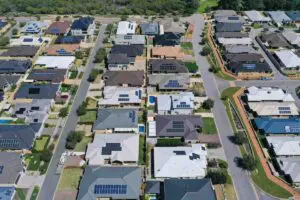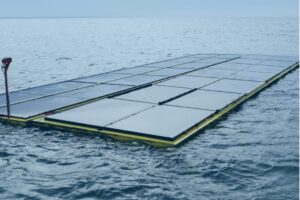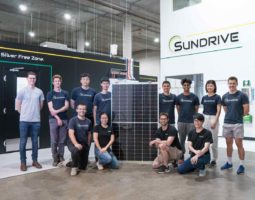A husband and wife duo are half of a four-strong Australian team, including the globally renowned “father of PV,” to win the ‘Nobel for engineering’ for their work in accelerating the global shift to renewable solar power.
The 2023 Queen Elizabeth Prize for Engineering (QEPrize) was awarded for work on Passivated Emitter and Rear Cell (PERC) solar photovoltaic technology, an innovation that allowed solar photovoltaic panels become a low cost energy source for millions around the world.
Aihua Wang and her husband Jianhua Zhao won the prize, alongside Professor Andrew Blakers from the Australian National University, and their PhD supervisor and giant of solar research, the University of NSW Professor Martin Green. They will share £500,000 in prize money
Pushing the limits of silicon
Between 1983 and 2023 Green’s UNSW lab was ground zero for solar efficiency discovery, and where all four of the Australian researchers found ways to improve the energy conversion efficiency of silicon cells that would go on to dominate the commercial industry, accounting for 90 per cent of the global PV market today.
By improving the surface of PERC PV cells, electrons within the silicon were able to maintain their charged state for longer, which allowed them to generate more electricity. It has now become the global standard.
In 1983, Green and Blakers developed cells that were 18 per cent efficient at converting the sun’s light into electricity, up from 16.5 per cent.
Over the next two years they lifted this to 20 per cent. Green’s other two PHd students Wang and Zhao worked on his theory that silicon cells could reach a practical 25 per cent efficiency limit and reached this goal in 1999.
Since then efficiency improvements have been measured in the decimal points, with Japanese firm Kaneka reaching 26.63 per cent in 2017, followed last year by Chinese PV module maker Longi with 26.81 per cent.
Groundwork for global solar adoption
Green said he’s honoured to share the QEPrize with his three former PhD students and proud of their broader achievements outside the PERC research.
“This has not only been in developing new cell technologies like PERC, but also in transforming the solar manufacturing industry by using their expertise to establish manufacturing in low-cost regions of Asia. This is one of the main reasons that solar has suddenly become so cheap over the last decade,” he said.
“Silicon solar cells allow clean and affordable electrification of energy-poor rural areas across Asia, Africa and the Americas.”
Wang and Zhao set up China’s second large scale solar manufacturer, China Sunergy, in 2006, after a combined 40 years at UNSW.
The annual prize is given to engineers responsible for ground-breaking innovations that have been of global benefit to humanity.
PERC technology is easy to manufacture and can produce more electricity compared to other solar technologies. It is now the most commercially viable silicon solar cell technology used in solar panels and accounts for about 90 per cent of the world’s solar cell market, making it the global standard.
“This is such an honour for me, and a testament to the many wonderful people I have worked with over the years. As a PhD student and postdoctoral researcher working on high efficiency silicon solar cells at UNSW in the 1980s, it was a fantasy to imagine that our work could have a global impact,” Blakers said.
Australia’s former chief scientist Alan Finkel says today’s PERC cells are the result of decades of combined effort that has produced a truly transformational technology.
“Tackling climate change is not easy and we’re not going to overcome it just with behavioural change. We must use technology to reduce our emissions, which is why PERC cells and solar energy are so important,” he said.
One of the prize judges, German mechanobiologist Viola Vogel, said while Einstein was the first to outline the theory of photoelectric effect, it was the UNSW team who made it usable in everyday life.
“A lot of effort has gone into better utilising the broad spectrum of sunlight from the UV to the infrared to create energy to convert into electrical energy. However, many of these other technologies were competitive with respect to stability, lifetimes, costs, and only PERC technology is now competitive with other sources of energy,” she said.









